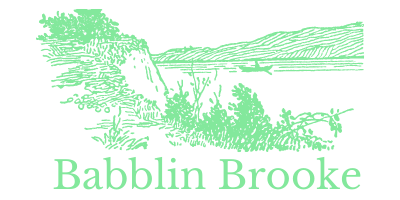Let’s face it-clogged drains happen to all of us. Whether it’s a sink that’s draining slower than you’d like or a complete blockage in the shower, dealing with it is never fun. But before you rush to grab that plunger or drain cleaner, there are some common mistakes people make that can turn a simple task into a bigger headache.
1. Using Too Much Force with a Plunger
The plunger is often the go-to tool for unclogging drains, and it’s a solid choice-when used correctly. But many people go overboard with it, thinking that the more force they use, the better the result.
Here’s the thing: Too much force can push the clog deeper into the drain, making it even harder to remove. Worse, if you’re dealing with older pipes, you risk damaging them.
What to do instead: Apply consistent, moderate pressure with your plunger. The goal is to create a vacuum effect that loosens the blockage, not to smash it down. Be patient; a few steady plunges can often do the trick without risking damage. If there’s no move, save yourself the trouble and get in touch with a plumber in Plano. Do you really want to risk making the problem worse?
2. Using Harsh Chemical Drain Cleaners
It’s tempting to grab a bottle of chemical drain cleaner when you’re faced with a stubborn clog. After all, they promise fast results, right? But these products can cause more harm than good in the long run.
Many commercial drain cleaners use harsh chemicals that can erode your pipes over time. They may offer a quick fix, but repeated use can lead to corrosion, leaks, and expensive repairs.
What to do instead: Opt for more gentle methods first. A mixture of baking soda and vinegar is surprisingly effective for minor clogs, and it’s much gentler on your plumbing. If you must use a chemical cleaner, make sure it’s safe for your specific type of pipes (check the label!) and avoid making it a habit.
3. Ignoring the Trap (P-Trap or S-Trap)
Ever heard of the trap? It’s the U- or S-shaped section of pipe under your sink that holds a small amount of water to prevent sewer gases from coming up into your home. It’s also where a lot of clogs like to hang out.
One rookie mistake is forgetting to check the trap for blockages. This section of pipe often collects hair, food, and soap scum, which leads to slow drainage or complete clogs.
What to do instead: Before going all out with drain snakes or harsh chemicals, take a moment to inspect the trap. You’ll need a bucket to catch any water when you unscrew it, but the effort is minimal and it’s often the source of the problem.
4. Not Flushing the Drain After Clearing a Clog
After you’ve successfully cleared a clog, it’s easy to just pack everything up and call it a day. But if you don’t flush the drain properly afterward, you’re setting yourself up for future clogs.
Debris can get left behind even after the main blockage is removed, leading to another clog down the line.
What to do instead: Once the clog is gone, flush the drain thoroughly with hot water. This helps clear out any remaining residue and ensures your pipes are free of lingering debris.
5. Using the Wrong Tools
Not all clogs are created equal, and using the wrong tools can make matters worse. For example, a drain snake is great for reaching deeper clogs, but using one in a sink that only needs a plunger can damage the pipes or the fixture.
What to do instead: Start with the simplest tools first. A plunger is often enough for minor clogs. If that doesn’t work, you can move on to something like a drain snake. However, if you’re unsure of what you’re doing, it might be worth calling in a professional. In such cases, contact a Riverside CA plumber, or a place near you, to get the expertise needed to handle complicated clogs successfully. Their knowledge can ensure that the problem is resolved favorably, thus saving you time and repair costs.
6. Pouring Grease Down the Drain
We’ve all been there-you’ve just finished cooking, and it seems so much easier to dump that leftover grease or oil down the drain. But this is one of the biggest mistakes you can make for your plumbing.
Grease solidifies as it cools, causing blockages in your pipes. Over time, these build up and lead to slow drainage or even complete clogs.
What to do instead: Always avoid pouring grease down the drain. Let it cool and dispose of it in the trash instead. If you’ve already made this mistake, hot water and dish soap can help dissolve some of the grease, but you may need to call in a plumber if it’s a bigger issue.
7. Not Wearing Protective Gear
When you’re dealing with a clog, it’s easy to forget about safety, especially if you’re in a hurry to fix the issue. However, you can encounter some nasty stuff in your drains-germs, bacteria, and even chemicals if you’ve used a cleaner. Failing to protect yourself could lead to irritation or infection.
What to do instead: Always wear gloves and consider eye protection when working on a drain. This is especially important if you’ve used any chemical drain cleaner. Better safe than sorry!
8. Waiting Too Long to Address the Problem
Many people wait until a slow drain becomes a full-on clog before doing anything about it. But the longer you wait, the harder it will be to fix.
A slow drain is often a sign of an impending clog. Waiting until the water refuses to go down at all means you’ll likely have a bigger mess to deal with.
What to do instead: Pay attention to your drains and address slow drainage right away. Regular maintenance can prevent bigger problems, saving you time and money in the long run. You can consider calling in professionals from companies like McMahon Plumbing for timely repair and maintenance of the drainage system.
Final Thoughts
Clogged drains don’t have to be a nightmare, as long as you avoid these rookie mistakes. Keep your tools simple, stay safe, and take care of the problem early on. With these tips, you’ll keep your drains flowing smoothly and avoid those dreaded plumbing mishaps!






Leave A Comment